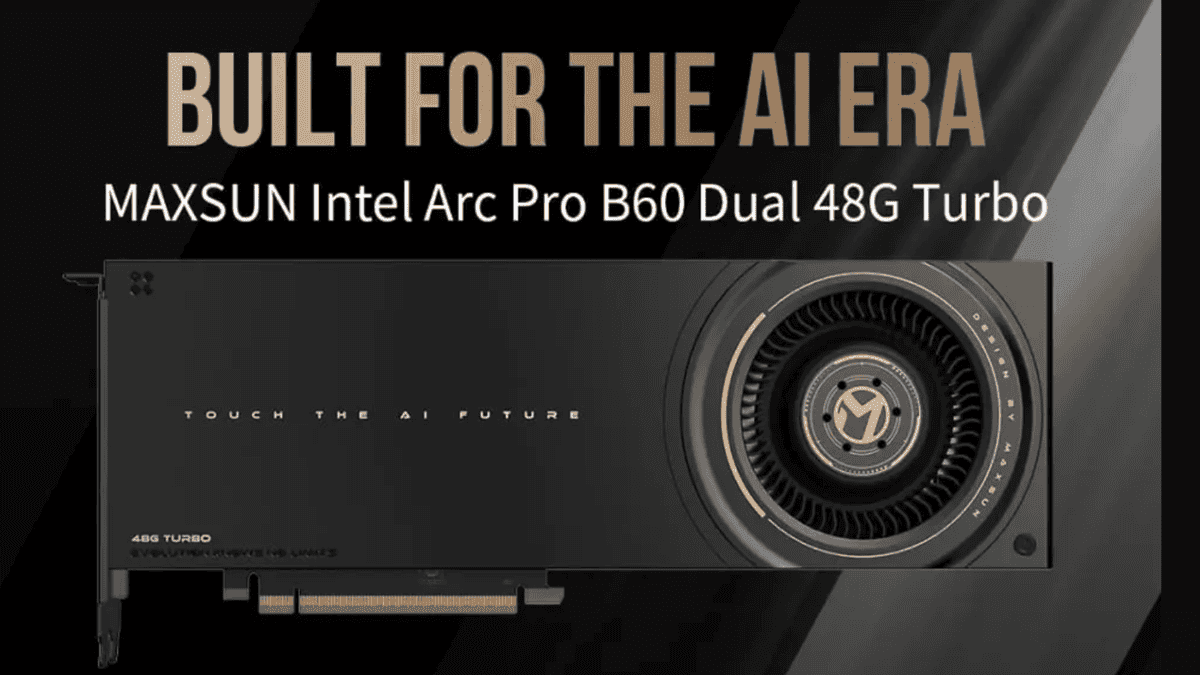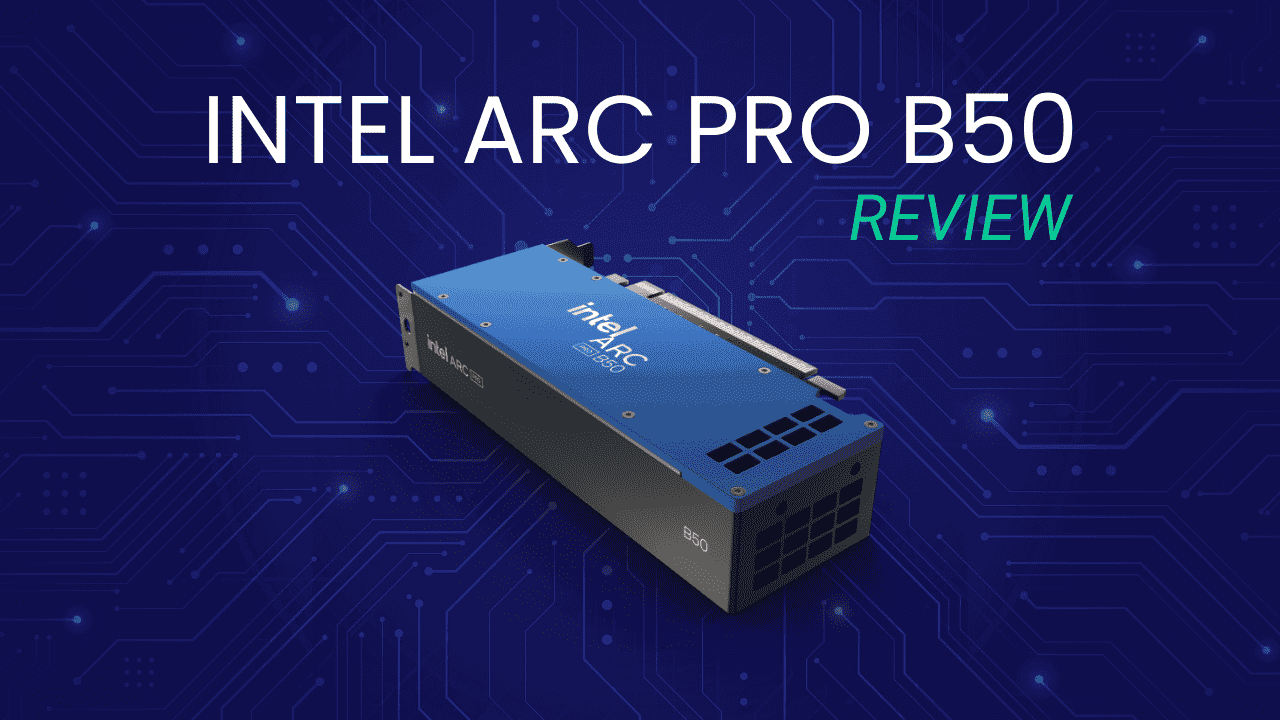Intel's Dual-GPU Arc Pro B60: A 48GB GDDR6 Powerhouse for AI Workloads
4 Sources
4 Sources
[1]
Maxsun unveils Intel dual-GPU Battlemage graphics card with 48GB GDDR6 to compete with Nvidia and AMD
Intel announced the chipmaker's new Arc Pro B50 and Arc Pro B60 at Computex 2025. Maxsun has stitched two of the latter models to produce the Intel Arc Pro B60 Dual 48G Turbo, a dual-GPU solution that provides 48GB of GDDR6 memory designed to address the most challenging AI workloads. Dual-GPU graphics cards were once popular, but technological advances have made them obsolete. The last consumer-grade dual-GPU graphics card from Nvidia was likely the GeForce GTX Titan Z from 2014, while AMD's was the Radeon Pro Duo from 2016. This means it's been quite a while since chipmakers introduced a dual-GPU product for retail. Although the Arc Pro B60 may not revive the trend, it remains noteworthy since Intel's first foray into the dual-GPU market. Then again, it's an AI graphics card, not a gaming one. The Intel Arc Pro B60 Dual 48G Turbo essentially combines two Arc Pro B60 graphics cards on one board. It utilizes dual Battlemage BMG-G21 silicon, each accompanied by its own memory. The same silicon powers the Arc B580 but offers double the memory compared to the gaming counterpart. The GPU inside the Intel Arc Pro B60 Dual 48G Turbo operates according to Intel's reference specifications. It doesn't feature factory overclocks or anything of that sort. Therefore, we're looking at 20 Xe cores, 20 RT units, 160 XMX and 160 Xe vector engines, and a 2,400 MHz clock speed. The Arc Pro B60 has 24GB of GDDR6 memory clocked at 19 GBps -- the 192-bit memory interface results in a memory bandwidth of up to 456 GB/s. The biggest selling point is that the Intel Arc Pro B60 Dual 48G Turbo has 48GB of total memory, 50% more than the GeForce RTX 5090 and matching that of the RTX Pro 5000 Blackwell or the Radeon Pro W7900. With 48GB on one Intel Arc Pro B60 Dual 48G Turbo, users can have multiple graphics cards in a single system to scale the capacity. For example, Intel had a system with two, totaling 96GB, on display. With the correct motherboard, you can easily have four installed for 192 GB. The Intel Arc Pro B60 Dual 48G Turbo is designed to fit into a standard PCIe 5.0 x16 expansion slot; however, there is a catch. Each Arc Pro B60 interacts with your system independently through a bifurcated PCIe 5.0 x8 interface. Thus, it's important to note that the motherboard must support PCIe bifurcation for the PCIe 5.0 slot hosting the Intel Arc Pro B60 Dual 48G Turbo. Like your typical AI or workstation graphics cards, the Intel Arc Pro B60 Dual 48G Turbo has a blower-type design and occupies two PCI slots. Maxsun has implemented a full-cover vapor chamber for cooling the graphics card's components and an additional metal backplate to help with heat dissipation. The graphics card is 11.8 inches (300mm) in length, so it fits inside the workstation territory, which normally spans from 10.5 to 12 inches. The TDP for the Arc Pro B60 varies between 120W and 200W, depending on the partner design. In Maxsun's case, the company has specified a total TDP of 400W, meaning one Arc Pro B60 is rated for 200W. For the same reason, the manufacturer has implemented a single 12VHWPR power connector for up to 600W. Each Arc Pro B60 GPU has one DisplayPort 2.1 output with UHBR20 support and one HDMI 2.01a port. Since there are two of them, the graphics card offers two of each. Regarding resolution support, the maximum is either 8K (7680x4320) at 60 Hz or 4K (3840x2160) at 240 Hz. Maxsun didn't reveal when or for how much the Intel Arc Pro B60 Dual 48G Turbo will be available for purchase. The Arc Pro B60 costs approximately $500 per unit, so Maxsun's AI graphics card could reasonably retail for around $1,000.
[2]
Is Intel quietly building the craziest GPU yet? A 48GB dual-chip beast might be coming soon
With no benchmarks and specs, this card is more rumor than revolution right now Intel may be preparing to launch an unusual graphics card featuring two Arc B580 GPU chips and 48GB of memory, reports have claimed. While this isn't an official Intel product, it appears to be a custom design developed by one of Intel's board partners, who remains unnamed due to non-disclosure agreements. What makes this card notable is the return of a dual-GPU layout using consumer-class chips, something the industry hasn't seen in several years. This particular model reportedly combines two B580 GPUs, each paired with 24GB of memory, for a total of 48GB on a single card. The intent doesn't appear to be gaming, which raises questions about the target audience. Given the high memory and compute potential, one possibility is that it's intended for AI development or other high-throughput workloads. Although 48GB still falls short of the memory capacity in top-tier professional accelerators, using consumer-grade GPUs could offer a cost-effective alternative for some training scenarios. Still, without performance benchmarks or detailed architectural information, it's difficult to determine whether this configuration could compete with even midrange professional GPUs. For users comparing it against the best GPUs currently available, skepticism is warranted. No other board partners have been linked to similar designs, and it remains unclear whether this is a one-off experiment or part of a broader strategy. This development may also interest content creators. With such a high memory ceiling, it could appeal to users seeking the best laptops for video editing or for Photoshop, assuming future mobile variants emerge. But until more technical data is released, this card is best regarded as a curiosity rather than a sure bet.
[3]
This insane $1,000 Intel GPU could challenge Nvidia's $18,000 monster in workstation memory power
Each GPU gets one DisplayPort and one HDMI, avoiding OS overload in multi-GPU workstations At Computex 2025, Maxsun unveiled a striking new entry in the AI hardware space: the Intel Arc Pro B60 Dual GPU, a graphics card pairing two 24GB B60 chips for a combined 48GB of memory. Servethehomeclaims Maxsun envisions these cards powering dense workstation builds with up to four per system, yielding as much as 192GB of GPU memory in a desktop-class machine. This development appears to have Intel's implicit approval, suggesting the company is looking to gain traction in the AI GPU market. The Arc Pro B60 Dual GPU is not designed for gaming. Instead, it focuses on AI, graphics, and virtualization tasks, offering a power-efficient profile. Each card draws between 240W and 300W, keeping power and thermal demands within reach for standard workstation setups. Unlike some alternatives, this card uses a blower-style cooler rather than a passive solution, helping it remain compatible with conventional workstation designs. That matters for users who want high-end performance without building custom cases or cooling systems. Still, the architecture has trade-offs. The card relies on x8 PCIe lanes per GPU, bifurcated from a x16 connector. This simplifies design and installation but limits bandwidth compared to full x16 cards. Each GPU also includes just one DisplayPort and one HDMI output. That design choice keeps multi-GPU setups manageable and avoids hitting OS-level limits, older Windows versions, for example, may have trouble handling more than 32 active display outputs in a single system. The card's most intriguing feature may be its pricing. With single-GPU B60 cards reportedly starting around $375 MSRP, the dual-GPU version could land near $1,000. If that estimate holds, Maxsun's card would represent a major shift in value. For comparison, Nvidia's RTX 6000 Ada, with the same 48GB of VRAM, sells for over $5,500. Two of those cards can push costs north of $18,000. Even so, Intel's performance in professional applications remains an open question. Many creative professionals still favor Nvidia for its mature drivers and better software optimization.
[4]
I'm actually jealous of the workstation that gets to use this Maxsun graphics card containing two Intel Arc GPUs and 48 GB of VRAM
Dual-GPU cards might be dead for gaming but they're alive and well for AI inference. Two GPUs on a single graphics card... now where have I heard this one before? Intel and its partner Maxsun have stuffed two of its new Arc Pro B60 chips onto a single GPU, and yes, it's for AI. If you're a PC gamer of a certain age, you may remember a few choice graphics cards that were made up of, more or less, two graphics cards on a single PCB, like the AMD Radeon R9 295X2. These contained all the components required to run the chips practically independently of one another, using drivers to combine their power to render a game. These cards are long-extinct now, due to a lack of the necessary Crossfire/SLI support and companies favouring large single GPUs instead. This new Intel and Maxsun dual-GPU card is bringing this concept back, sort of. The Maxsun dual-GPU card combines two Arc Pro B60 cards into a single relatively slim shroud. Slim considering it's a dual-GPU card, anyways. It's a bit of a beast for VRAM capacity, as each GPU has access to 24 GB of memory, making for 48 GB total per card. That's 96 GB for a two-card system, which is exactly what Intel was showing off over at Computex 2025. Intel showed off the Maxsun card in an inference machine, alongside a XEON CPU. It was running an AI model locally -- these models are huge and easily swallow up most gaming card's VRAM capacity -- but what was more impressive was the fact it only had two physical cards in the system. It was sat alongside another system using four, and both shared 96 GB of RAM. Unfortunately I couldn't peek the temps but I suspect those dual-GPU cards require decent cooling. The Pro B60 is a new arrival into the workstation lineup for Intel, alongside the B50. It's made up of a G21 GPU, the same found in the Arc B580, but with double the memory attached using the clamshell method also used on the RTX 5060 Ti 16 GB variant. That means 24 GB memory, 456 GB/s bandwidth, 20 Xe-cores, and a 120-200 W TBP. Oh and to run both GPUs over a single PCI slot, a x16 PCIe 5.0 connection is bifurcated into two x8 connections, which is ample enough bandwidth. Speaking to Intel at Computex 2025, I can confirm there is no 24 GB variant planned for gamers. There's just no real benefit for gamers with this configuration, I'm told. It's only for AI, folks. Will we ever see a return to dual-card configurations for gaming? Not unless someone figures out a way to have the two cards appear as one without a large amount of driver development work. That was the thorn in previous efforts with Crossfire and SLI, which saw AMD and Nvidia valiantly try to get dual-card systems working smoothly in many games and often still end up with shaky experience. All the major GPU companies would undoubtedly like to find the perfect, driver-free solution, but we're not at a loss for performance with the largest individual GPUs around today and I doubt its development is high on the priorities list.
Share
Share
Copy Link
Intel and Maxsun unveil a dual-GPU graphics card, the Arc Pro B60 Dual 48G Turbo, featuring 48GB GDDR6 memory. This innovative design, while not for gaming, targets AI and professional workloads, potentially challenging high-end offerings from Nvidia and AMD.
Intel's Dual-GPU Innovation
Intel, in collaboration with partner Maxsun, has unveiled a groundbreaking dual-GPU graphics card at Computex 2025, marking a significant development in the AI hardware space. The Intel Arc Pro B60 Dual 48G Turbo combines two Arc Pro B60 GPUs on a single board, each equipped with 24GB of GDDR6 memory, totaling an impressive 48GB
1
.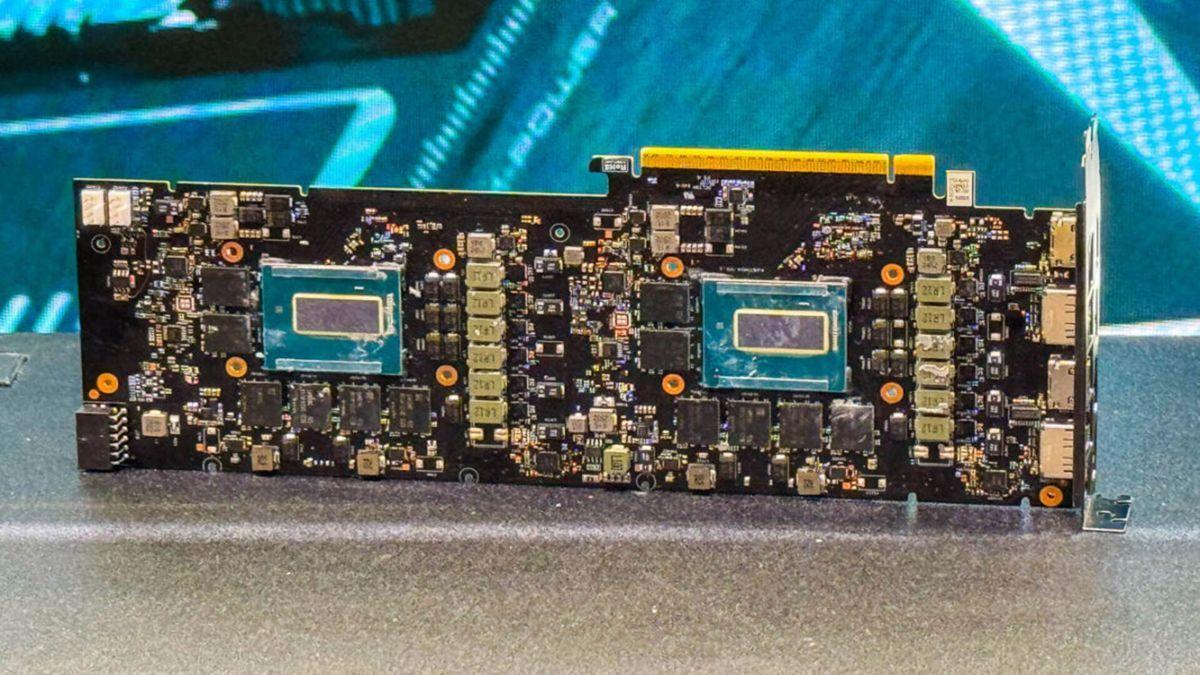
Source: TechRadar
Technical Specifications
The Arc Pro B60 Dual 48G Turbo features dual Battlemage BMG-G21 silicon, the same used in the Arc B580. Each GPU operates at Intel's reference specifications, boasting 20 Xe cores, 20 RT units, 160 XMX and 160 Xe vector engines, and a clock speed of 2,400 MHz. The 192-bit memory interface delivers a bandwidth of up to 456 GB/s
1
.Design and Compatibility
The card is designed to fit into a standard PCIe 5.0 x16 expansion slot, with each Arc Pro B60 interacting independently through a bifurcated PCIe 5.0 x8 interface. This design requires motherboard support for PCIe bifurcation. Measuring 11.8 inches (300mm) in length, the card features a blower-type cooling system and occupies two PCI slots
1
.Power and Display Outputs
With a total TDP of 400W, the card is equipped with a single 12VHWPR power connector capable of delivering up to 600W. Each GPU provides one DisplayPort 2.1 output with UHBR20 support and one HDMI 2.01a port, allowing for a maximum resolution of 8K at 60 Hz or 4K at 240 Hz
1
.Target Applications and Market Positioning
The Arc Pro B60 Dual 48G Turbo is not intended for gaming but rather focuses on AI, graphics, and virtualization tasks. Its power-efficient profile, drawing between 240W and 300W, makes it suitable for standard workstation setups
3
.Related Stories
Potential Impact on the Market
This development could represent a significant shift in the AI GPU market. With an estimated price of around $1,000, the Arc Pro B60 Dual 48G Turbo offers a cost-effective alternative to high-end professional accelerators. For comparison, Nvidia's RTX 6000 Ada, also with 48GB of VRAM, sells for over $5,500
3
.Future Prospects and Limitations
While the card's high memory capacity and potential cost-effectiveness are promising, its performance in professional applications remains to be seen. Many creative professionals still favor Nvidia for its mature drivers and better software optimization
3
.Conclusion
The Intel Arc Pro B60 Dual 48G Turbo represents a bold move by Intel and Maxsun in the AI hardware market. While it may not revive the trend of dual-GPU cards for gaming, it offers an intriguing option for AI development and high-throughput workloads. As the industry awaits performance benchmarks and detailed specifications, this innovative card could potentially challenge the dominance of established players in the professional GPU market.
References
Summarized by
Navi
[1]
[2]
[3]
Related Stories
Recent Highlights
1
Nvidia locks in $20 billion Groq deal, securing AI chip rival's technology and talent
Business and Economy
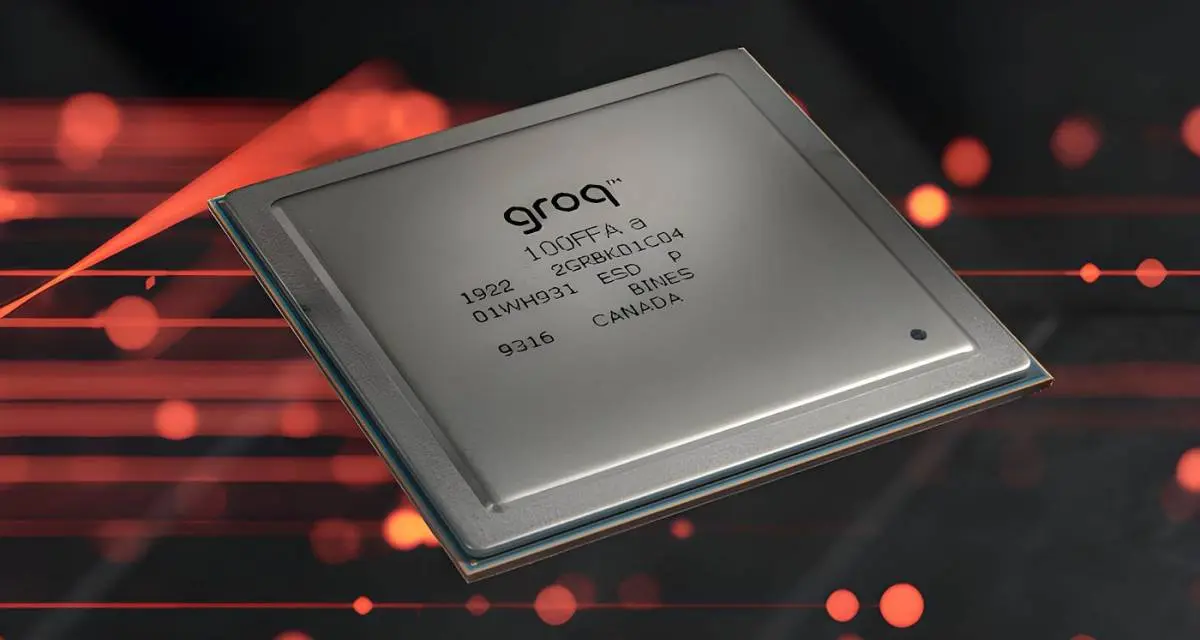
2
Chinese AI Models Close Gap With US Systems as Open-Source Strategy Reshapes Global Tech Order
Policy and Regulation
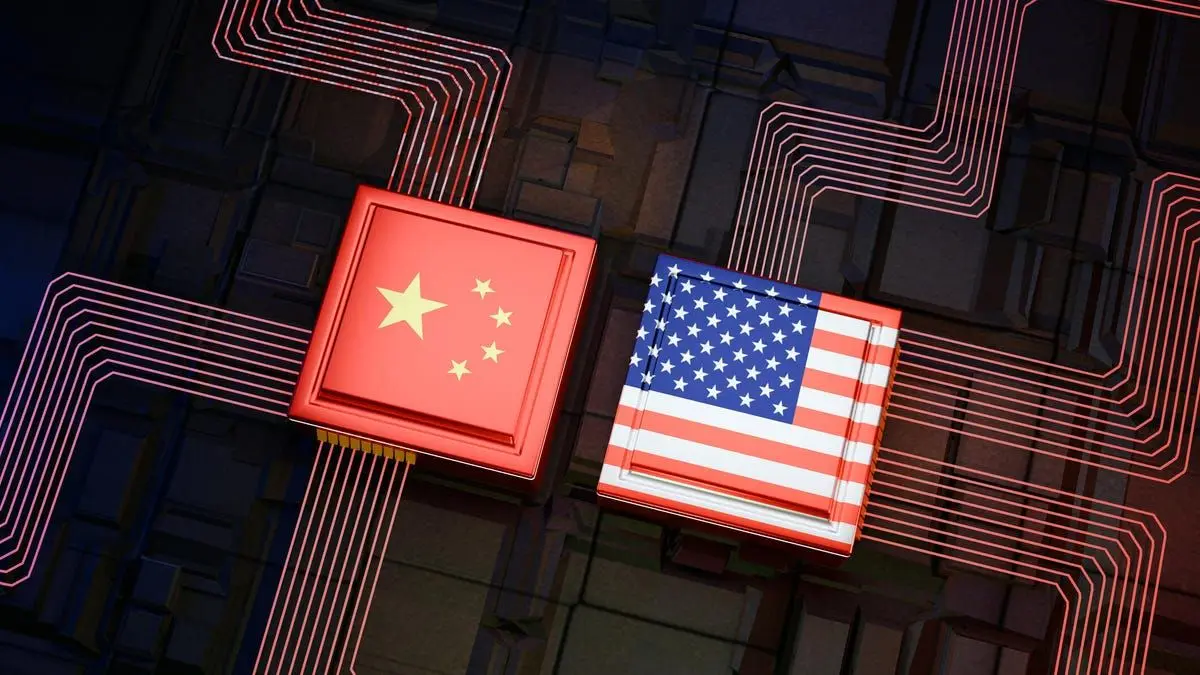
3
Doctors warn AI companions threaten mental health as kids turn to chatbots for friendship
Health

